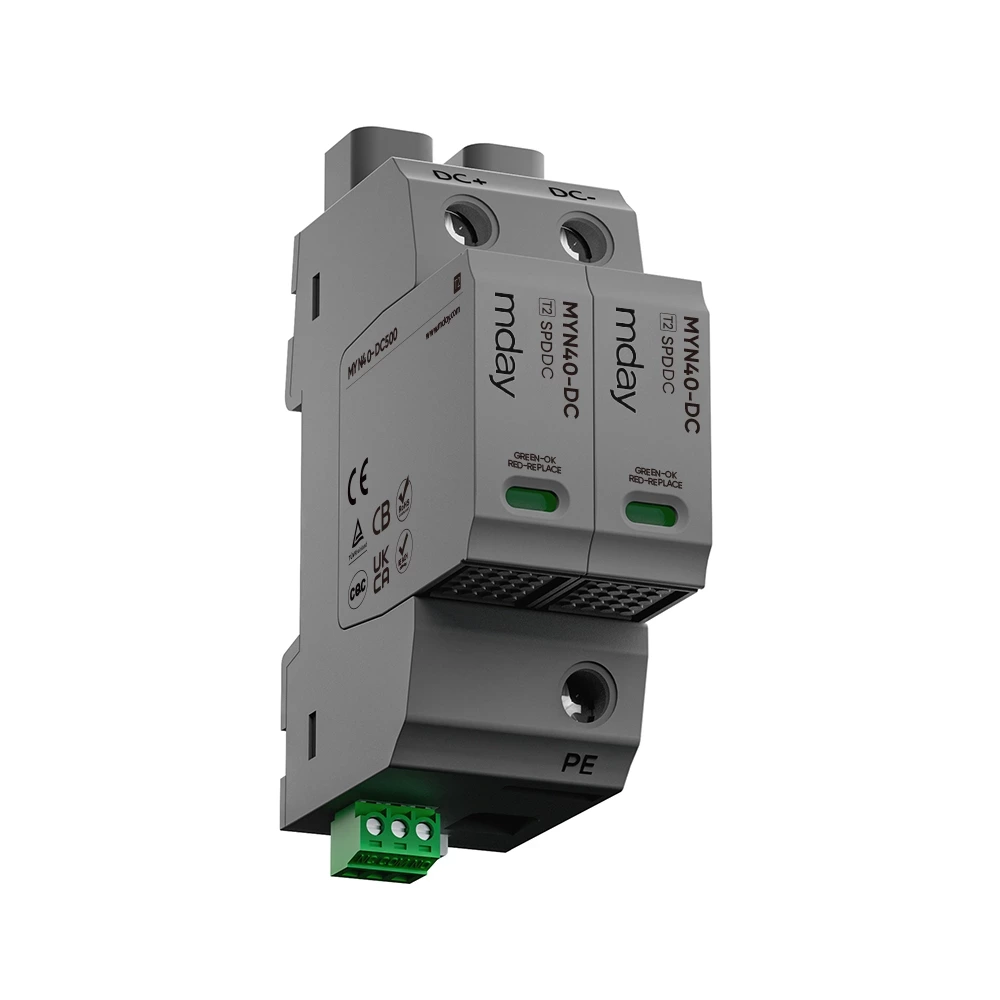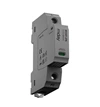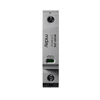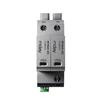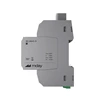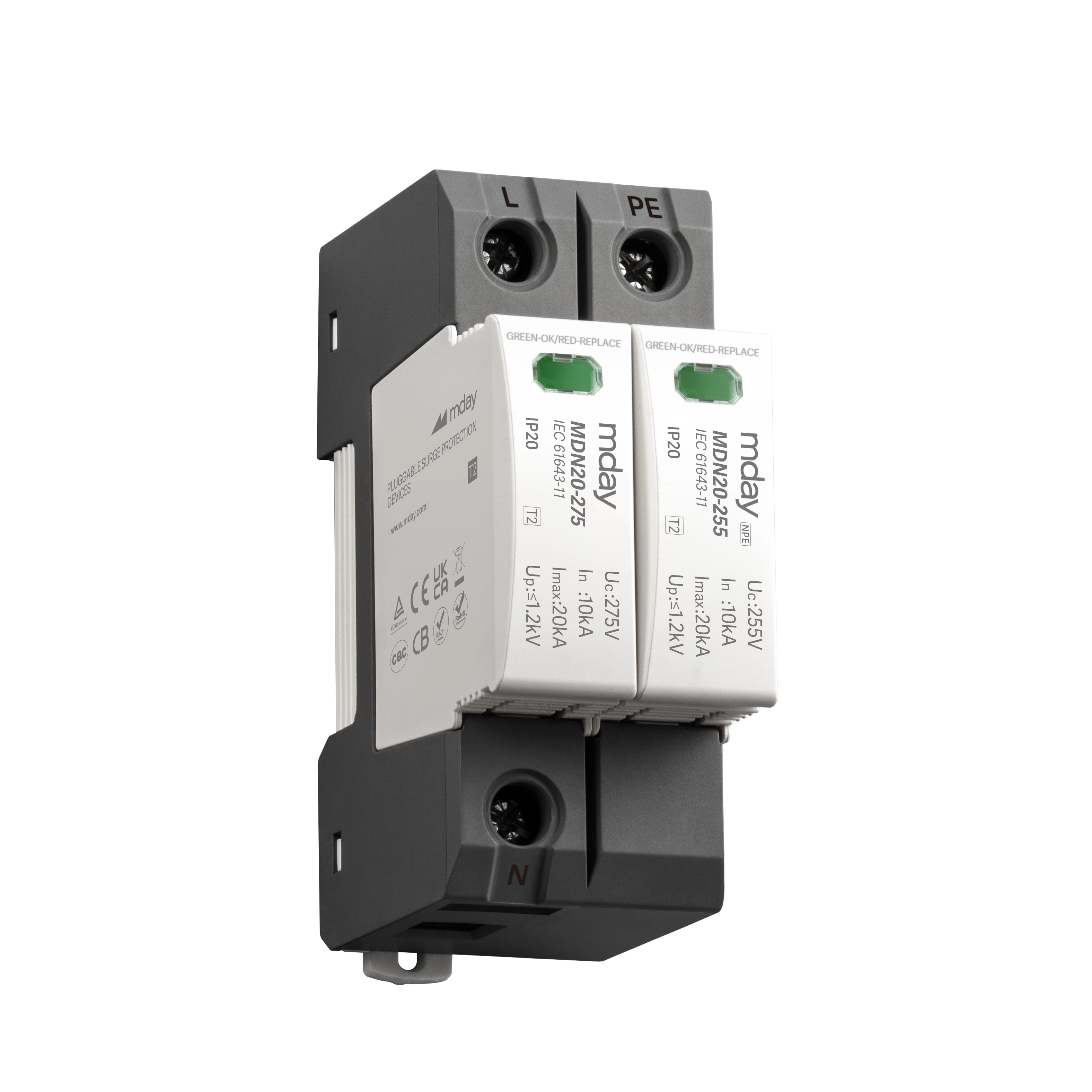Surge Protectors By Purpose
1. Power line SPD
Since the energy of lightning strikes is very huge, it is necessary to gradually discharge the lightning energy to the earth through a graded discharge method. In the non-lightning protection zone (LPZ0A) or at the junction of the direct lightning protection zone (LPZ0B) and the first protection zone (LPZ1), a surge protector or a voltage-limiting surge protector that has passed the Class I classification test is installed as the first-level protection to discharge the direct lightning current, or when the power transmission line is directly struck by lightning, the huge energy conducted is discharged. At the junction of each sub-zone (including the LPZ1 zone) after the first protection zone, a voltage-limiting surge protector is installed as a second, third or higher level protection. The second-level protector is a protective device for the residual voltage of the previous protector and the induced lightning strike in the zone. When a large amount of lightning energy is absorbed in the previous stage, there is still a part of the energy that is quite huge for the equipment or the third-level protector, which will be transmitted and needs to be further absorbed by the second-level protector. At the same time, the transmission line passing through the first-level lightning arrester will also induce lightning electromagnetic pulse radiation. When the line is long enough, the energy of the induced lightning becomes large enough, and the second-level protector is required to further discharge the lightning energy. The third-level protector protects the residual lightning energy passing through the second-level protector. According to the withstand voltage level of the protected equipment, if the two-level lightning protection can limit the voltage to be lower than the withstand voltage level of the equipment, only two levels of protection are needed; if the withstand voltage level of the equipment is low, four or even more levels of protection may be required.
To select SPD, you first need to understand some parameters and their working principles.
⑴ The 10/350μs wave is a waveform that simulates direct lightning strikes, and the waveform energy is large; the 8/20μs wave is a waveform that simulates lightning induction and lightning conduction.
⑵ The nominal discharge current In refers to the peak current of the 8/20μs current wave flowing through the SPD.
⑶ The maximum discharge current Imax is also called the maximum flow rate, which refers to the maximum discharge current that the SPD can withstand once using an 8/20μs current wave.
⑷ The maximum continuous withstand voltage Uc (rms) refers to the maximum AC voltage effective value or DC voltage that can be continuously applied to the SPD.
⑸ Residual voltage Ur refers to the residual voltage value under the rated discharge current In.
⑹ Protection voltage Up represents the voltage characteristic parameter between the SPD limiting terminals. Its value can be selected from the list of preferred values and should be greater than the highest value of the limiting voltage.
⑺ Voltage switch type SPD mainly discharges 10/350μs current wave, and voltage limiting type SPD mainly discharges 8/20μs current wave.
2. Signal line SPD
Signal line SPD is actually a signal lightning arrester, which is installed in the signal transmission line, generally at the front end of the equipment, to protect subsequent equipment and prevent lightning waves from rushing into the signal line to damage the equipment.
1) Selection of voltage protection level (UP)
UP value should not exceed the rated value of the impulse voltage of the protected equipment. UP requires that the insulation of the SPD and the protected equipment should be well matched.
In the low-voltage power supply and distribution system, the equipment should have a certain surge tolerance capability, that is, the impulse overvoltage tolerance capability. When the impulse overvoltage withstand values of various equipment in the 220/380V three-phase system cannot be obtained, the given indicators of IEC 60664-1 and GB 50057-1994 (2000 edition) can be selected.
2) Selection of nominal discharge current In (impact current carrying capacity)
The peak current of 8/20 μs current wave flowing through the SPD. It is used for Class II classification test of SPD and also for pretreatment of Class I and Class II classification test of SPD.
In fact, In is the maximum impulse current peak value that the SPD can pass through the specified number of times (generally 20 times) and the specified waveform (8/20 μs) without substantial damage.
3) Selection of maximum discharge current Imax (limit impulse current carrying capacity)
The peak current of 8/20 μs current wave flowing through the SPD is used for Class II classification test. Imax and In have many similarities. They both use the peak current of the 8/20 μs current wave to perform a Class II classification test on the SPD. The difference is also obvious. Imax only performs an impact test on the SPD once, and the SPD does not suffer substantial damage after the test; while In can perform such a test 20 times, and the SPD cannot suffer substantial damage after the test. Therefore, Imax is the impact current limit value, so the maximum discharge current is also called the limit impact current capacity. Obviously, Imax>In.
